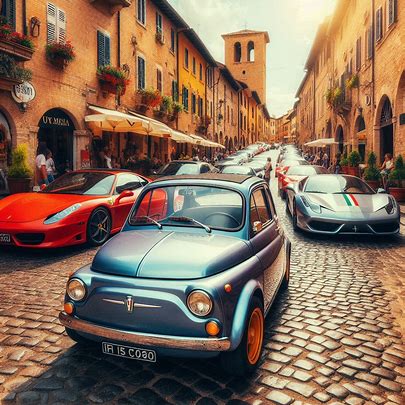From Ferrari to Fiat: Driving and Owning a Car in Italy

Italy’s roads pulse with automotive passion, from sleek Ferraris roaring through Tuscan hills to humble Fiats navigating Rome’s chaotic streets. For expats relocating to this vibrant country, understanding the driving culture and car ownership rules is essential. The journey involves more than admiring Italy’s car heritage—it requires mastering regulations, navigating bureaucracy, and embracing the local driving style. This guide dives into the essentials of driving and owning a car in Italy, offering practical tips for a smooth transition.
Getting Behind the Wheel
Relocating to Italy means diving into a world where cars are more than transportation; they’re a way of life. Before hitting the road, expats must understand Italy’s driving laws. A valid driver’s license is the first step. EU citizens can use their home country’s license, but non-EU residents, including Americans, need an International Driving Permit (IDP) alongside their native license. After a year, most non-EU expats must obtain an Italian driver’s license, which involves a theory test and a practical driving exam, both in Italian. Language barriers can make this daunting, so consider hiring a translator or enrolling in a driving school. For those planning a long-term stay, gathering information on Italian elective residency can clarify visa requirements that impact driving privileges. Transitioning to an Italian license ensures compliance and avoids fines, which can be steep.
Owning a Car in Italy
Owning a car in Italy comes with its own set of rules. Buying a vehicle is straightforward but involves paperwork. New or used, every car purchase requires a transfer of ownership, registered at the Public Automotive Registry (PRA). Dealerships often handle this, but private sales demand extra diligence. Expect to pay a value-added tax (VAT) of 22% on new cars, though used vehicles from private sellers may be exempt. Insurance is mandatory, and Italy’s rates are among Europe’s highest. Shop around for quotes, as prices vary widely. Additionally, an annual road tax, or bollo, must be paid based on the car’s engine size and emissions. Forgetting this can lead to penalties, so set reminders. These steps, while tedious, ensure your car is road-legal and ready for Italy’s diverse landscapes.
Importing a Vehicle
Importing a car to Italy is another option, but it’s not for the faint-hearted. The process is complex and costly, particularly for non-EU residents. Imported vehicles must meet EU safety and emissions standards, which may require modifications. Customs duties and VAT apply, often totaling 30% of the car’s value. After clearing customs, the car must be registered with the PRA within 60 days. Documentation, including proof of ownership and compliance certificates, must be meticulous. Many expats find importing worthwhile for sentimental or high-value vehicles, but others opt to buy locally to avoid the hassle. Weigh the costs against the convenience before deciding. Consulting a customs agent can save time and headaches.
Navigating Italy’s Roads
Driving in Italy demands adaptability. City streets, especially in Rome or Naples, are a whirlwind of scooters, pedestrians, and impatient drivers. Narrow roads in historic towns require precision, while rural routes offer scenic but winding challenges. Italians drive assertively—some might say aggressively—so stay alert. Speed limits vary: 130 km/h on highways, 90 km/h on secondary roads, and 50 km/h in urban areas. Speed cameras are common, and fines arrive swiftly. Parking is another hurdle. Blue lines indicate paid parking, white lines are free, and yellow lines are reserved for specific users. Apps like EasyPark simplify payments, but always check signs to avoid tickets. Embracing Italy’s driving rhythm takes practice, but it’s part of the adventure.
READ ALSO: Important Tips When Buying a Vehicle
Embracing the Car Culture
Beyond regulations, Italy’s car culture is a joy to explore. From Ferrari’s Maranello museum to Fiat’s storied history, cars are woven into the national identity. Car shows and rallies, like the Mille Miglia, celebrate this heritage. For expats, joining a car club can be a fun way to connect with locals and fellow enthusiasts. Yet, practical considerations remain key. Regular vehicle maintenance is crucial, as Italian roads can be tough on cars. Garages are plentiful, but English-speaking mechanics are rare outside major cities. Learning basic Italian phrases for car repairs can be a lifesaver.
Ready for the Road
Ultimately, driving in Italy is about embracing the journey—bureaucracy, chaos, and all. Whether you’re cruising along the Amalfi Coast or navigating Milan’s traffic, preparation is your best ally. Understand the rules, plan for paperwork, and dive into the culture. With patience, you’ll not only drive like an Italian but feel like one too. Ready to hit the road? Italy’s waiting.
